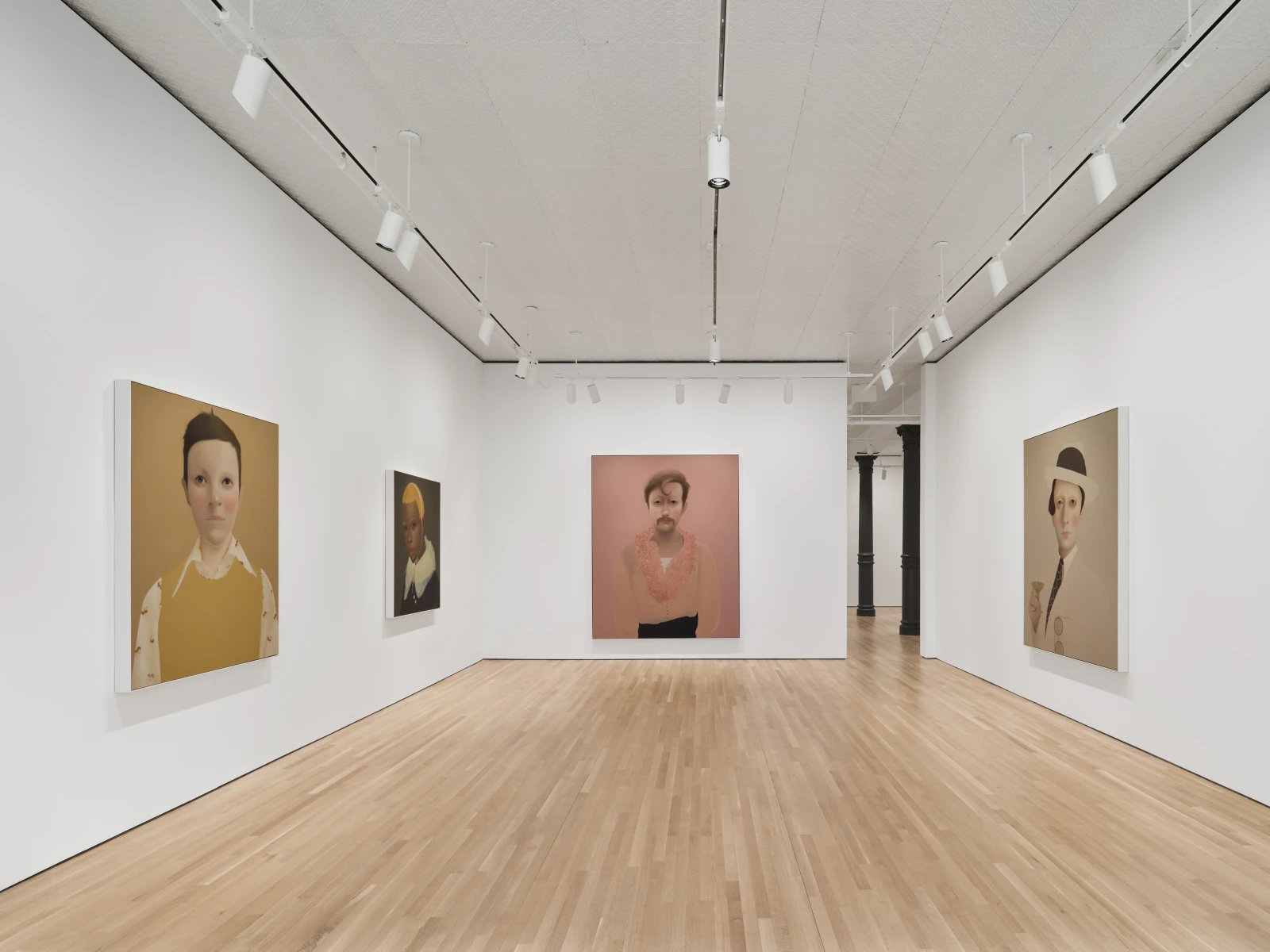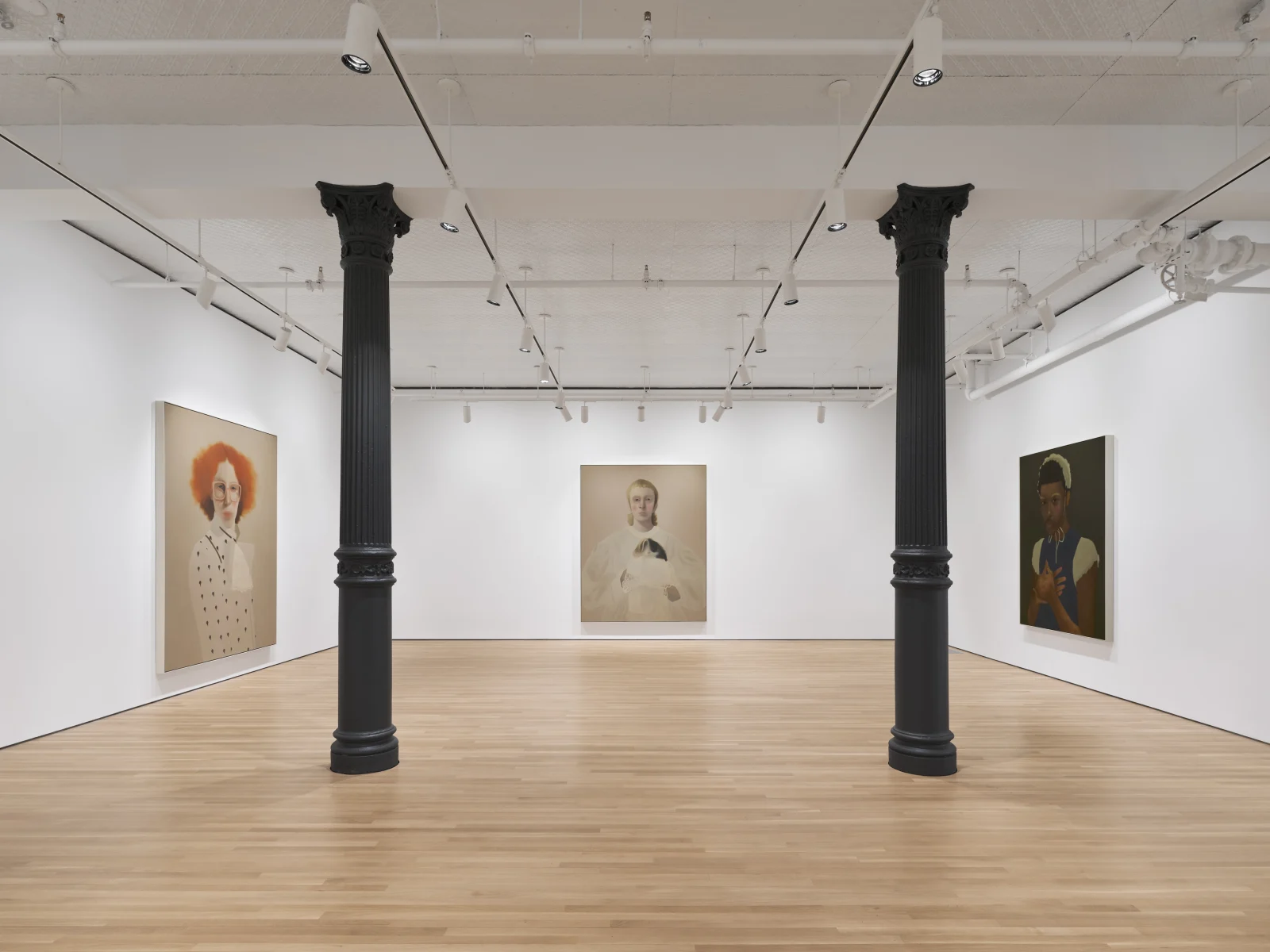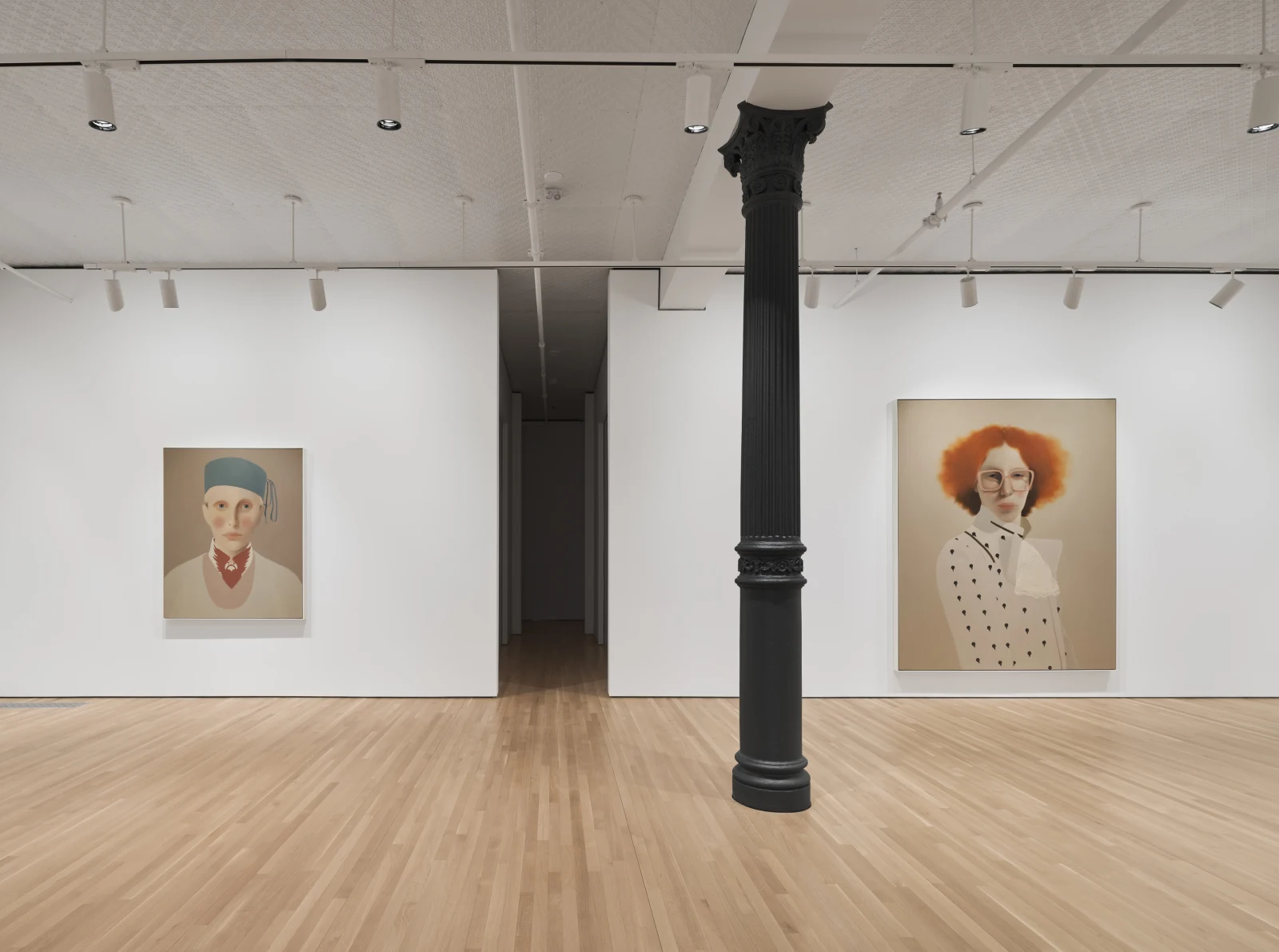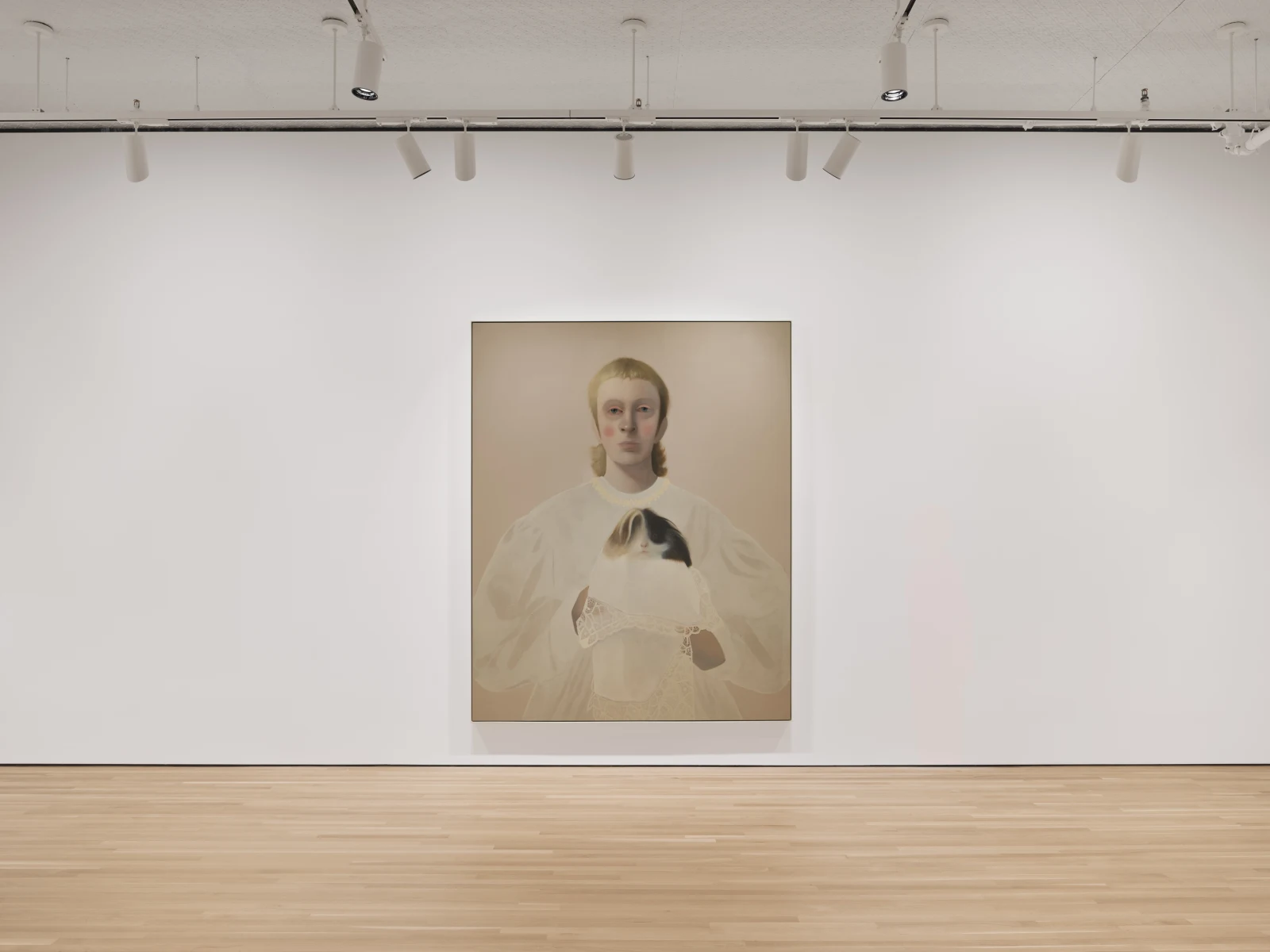
Sarah Ball: Tilted
Overview
“[Dandies] have no other calling but to cultivate the idea of beauty in their persons, to satisfy their passions, to feel and to think.” - Charles Baudelaire, The Painter of Modern Life (1863).
Stephen Friedman Gallery presents the first solo exhibition by British artist Sarah Ball in New York. The show comprises a new body of paintings exploring notions of dandyism in the 21st century. This presentation precedes a major solo exhibition at Longlati Foundation, Shanghai in 2025.
Portraying individuals who embrace self-expression and challenge conventions of gender, Ball spotlights facial features, hairstyles, clothing, jewellery, and makeup that unveil their unique qualities. The artist draws inspiration from diverse sources such as street casting, archival photographs, and social media. Set against flat expanses of colour and confined within tightly framed compositions, Ball imparts a surreal, timeless quality to her subjects by deliberately withholding any narrative about their identity.
Ball's new work is heavily influenced by the figure of the dandy, a concept popularised by poet and playwright Oscar Wilde (1854-1900). For Wilde, the dandy was a man who diligently attended to his appearance, clothing, and lifestyle. Often cultivating an indifferent air, the classic dandy was as much a character as an aesthetic.
Stephen Friedman Gallery presents the first solo exhibition by British artist Sarah Ball in New York. The show comprises a new body of paintings exploring notions of dandyism in the 21st century. This presentation precedes a major solo exhibition at Longlati Foundation, Shanghai in 2025.
Portraying individuals who embrace self-expression and challenge conventions of gender, Ball spotlights facial features, hairstyles, clothing, jewellery, and makeup that unveil their unique qualities. The artist draws inspiration from diverse sources such as street casting, archival photographs, and social media. Set against flat expanses of colour and confined within tightly framed compositions, Ball imparts a surreal, timeless quality to her subjects by deliberately withholding any narrative about their identity.
Ball's new work is heavily influenced by the figure of the dandy, a concept popularised by poet and playwright Oscar Wilde (1854-1900). For Wilde, the dandy was a man who diligently attended to his appearance, clothing, and lifestyle. Often cultivating an indifferent air, the classic dandy was as much a character as an aesthetic.
This ideal found its roots in Beau Brummell (1778-1840), a pioneering figure who fundamentally altered the trajectory of men's fashion by setting a new standard of elegance – abandoning wigs and adopting well-fitted trousers instead of breeches. In recent history, ‘dandy’ has been used to refer either to a fastidious or a flamboyant dresser, typified by groups such as Teddy Boys, Judies, Mods and sapeurs.
Discussing dandyism in relation to her new body of work, Ball explains: “I've come to realise that there isn't a description – the idea is a fluid one and it can change in respect to the social, political, and cultural climate of the time. Certain attributes though seem to be a given – theatricality, creativity, style, flamboyance, individuality, and a certain degree of (non-gendered) camp. In her 1964 essay ‘Notes on Camp’, Susan Sontag refers to camp as "the modern day Dandyism” in the age of mass culture – this particularly resonates with me.”
One of Ball’s subjects, Henry, is depicted in several paintings. Each one embodies this “modern day Dandyism” and showcases the sitter’s sartorial elegance. In one painting Henry dons a beret, a pair of braces, and a vintage Arrow shirt and collar. In another they are depicted wearing bright red lipstick with rouged cheeks. This playful defiance of conventional gender roles connects each work in the show. Declan wears a billowing Simone Rocha gown while holding a long-haired guinea pig. Wrapped ceremoniously in a lace handkerchief, the sitter’s pet is presented to the viewer like a votive offering. This eccentricity continues in 'Pink Elliot' (2023), whose facial hair is offset by the ostentatious pink ruffles cascading down his shirt. Viewed alongside one another, the variety of Ball’s sitters in the exhibition reveals the breadth of contemporary dandyism.
“[Dandies] have no other calling but to cultivate the idea of beauty in their persons, to satisfy their passions, to feel and to think.” - Charles Baudelaire, The Painter of Modern Life (1863).
Watch
Installation Views


















